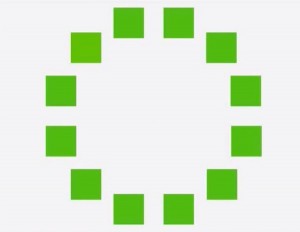You’ve undoubtedly seen, or at least heard about, the controversial dress post on Buzzfeed last week. The dress is black and blue, although it ignited controversy because many people see it as gold and white. The original article attracted 25 million views, although it was just a paste of a stream of Tumblr posts arguing about the color of the dress.
Wired and other outlets were prompt to provide scientific explanations for why our eyes sometimes see white instead of blue, in some cases referencing a history of color analysis concerning blue.
“Studies on Homer and the Homeric age”, written in 1858 by classicist and four-time Prime Minister William Gladstone, is particularly well-known for Gladstone’s exploration of color in ancient Greek. Homer describes the sea as being ‘wine-dark’ like oxen.
Inspired by Gladstone’s work, Lazarus Geiger, a philologist, to examine blue in Hebrew and other ancient texts. He believed that colors we refer to as blue would have been violet or white, leaving us with a very different description of heaven and the sky.
Radiolab talked about this in their 2012 episode “Colors“, which focused on modern linguist Guy Deutscher and his book, “Through the Language Glass: Why the World Looks Different in Other Languages”. Deutscher confirms the findings of his predecessors and connects their theories to other developments in color perception and linguistics.
Beyond linguistic analysis, social scientists have also conducted studies to explore how we perceive color. Hues and Views was a cross-cultural study working with English children and children of the Himba tribe in Namibia, a country on the southwest coast of Africa.
The children of the Himba were able to differentiate between many more shades of green than their English counterparts, but did not recognize the color blue as being distinct from green. The research found that the 11 basic English colors have no basis in the visual system, lending further credence to the linguistic theories of Deutscher, Geiger, Gladstone, and other academics.

The color wheel above was one of the tests the researchers used. Can you spot the different green? Let us know in the comments! For simplicity, number the left-most top-most square as 1, and go around the wheel.
Other scholars disagree with the linguistic analysis summarized on Radiolab. Dr. Joel Hoffman, theological linguist, agrees that ancient Hebrew probably didn’t have a word which we’d identify as “Blue”, but he is dismissive of the idea that ancient people had no concept of blue.
Some photo buffs claim that blue skies were a side-effect of the overly blue hue in Kodachrome film, and that the dominance of Kodachrome shaped how we see and photograph the sky still; their argument is that the sky is properly more of a cyan color, which would place it closer to white than blue. (To really experience this rabbit hole, search for ‘Kodachrome blue vs cyan’: one highly technical post that references the color spectrum Kodachrome developed can be found in the Analog Photography Users Group forum.)
What color do you see in the sky? Can you spot the different green in the diagram above?
Posted by David Streever

